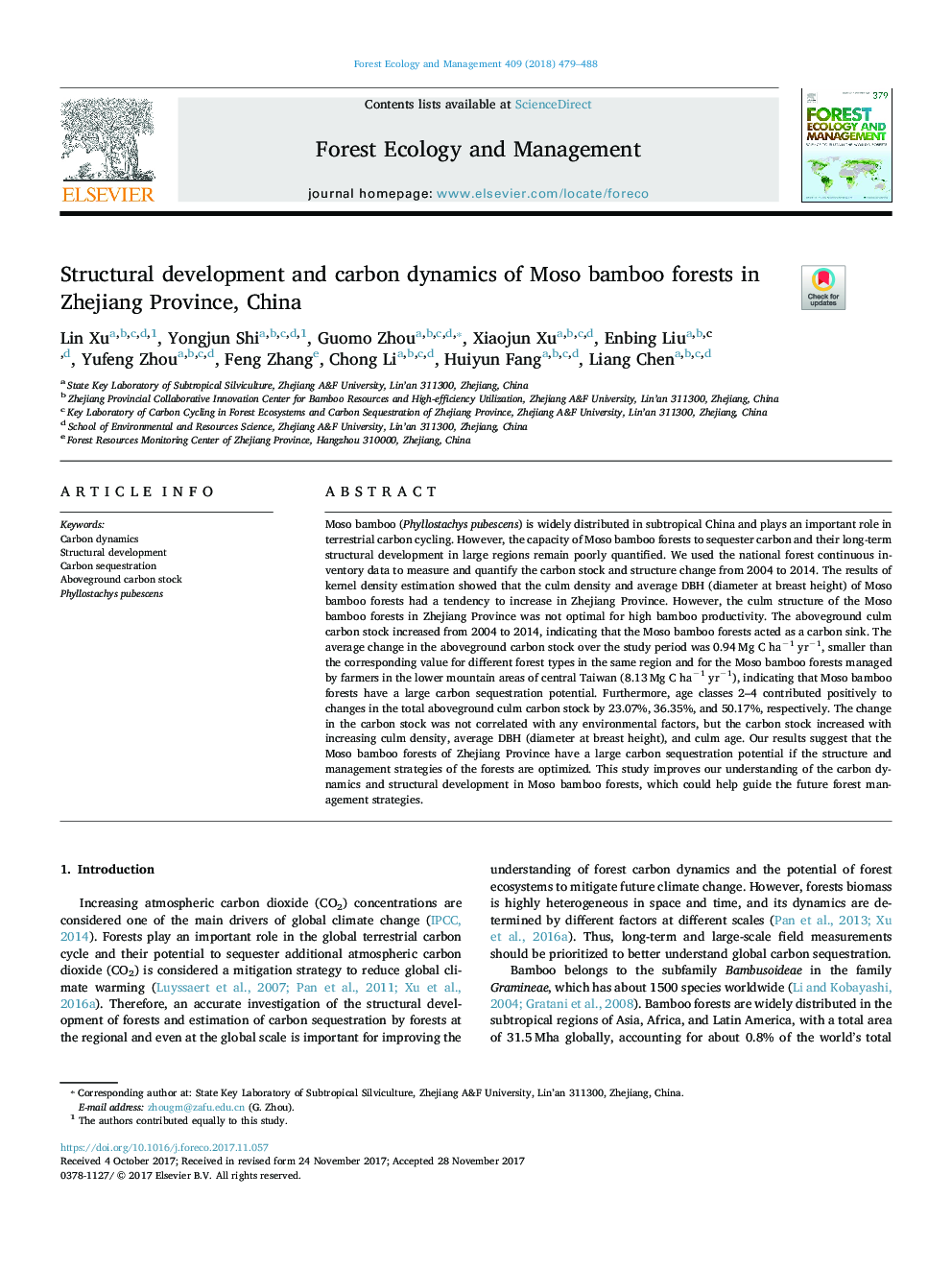| Article ID | Journal | Published Year | Pages | File Type |
|---|---|---|---|---|
| 6541936 | Forest Ecology and Management | 2018 | 10 Pages |
Abstract
Moso bamboo (Phyllostachys pubescens) is widely distributed in subtropical China and plays an important role in terrestrial carbon cycling. However, the capacity of Moso bamboo forests to sequester carbon and their long-term structural development in large regions remain poorly quantified. We used the national forest continuous inventory data to measure and quantify the carbon stock and structure change from 2004 to 2014. The results of kernel density estimation showed that the culm density and average DBH (diameter at breast height) of Moso bamboo forests had a tendency to increase in Zhejiang Province. However, the culm structure of the Moso bamboo forests in Zhejiang Province was not optimal for high bamboo productivity. The aboveground culm carbon stock increased from 2004 to 2014, indicating that the Moso bamboo forests acted as a carbon sink. The average change in the aboveground carbon stock over the study period was 0.94â¯Mg C haâ1 yrâ1, smaller than the corresponding value for different forest types in the same region and for the Moso bamboo forests managed by farmers in the lower mountain areas of central Taiwan (8.13â¯Mg C haâ1 yrâ1), indicating that Moso bamboo forests have a large carbon sequestration potential. Furthermore, age classes 2-4 contributed positively to changes in the total aboveground culm carbon stock by 23.07%, 36.35%, and 50.17%, respectively. The change in the carbon stock was not correlated with any environmental factors, but the carbon stock increased with increasing culm density, average DBH (diameter at breast height), and culm age. Our results suggest that the Moso bamboo forests of Zhejiang Province have a large carbon sequestration potential if the structure and management strategies of the forests are optimized. This study improves our understanding of the carbon dynamics and structural development in Moso bamboo forests, which could help guide the future forest management strategies.
Related Topics
Life Sciences
Agricultural and Biological Sciences
Ecology, Evolution, Behavior and Systematics
Authors
Lin Xu, Yongjun Shi, Guomo Zhou, Xiaojun Xu, Enbing Liu, Yufeng Zhou, Feng Zhang, Chong Li, Huiyun Fang, Liang Chen,
